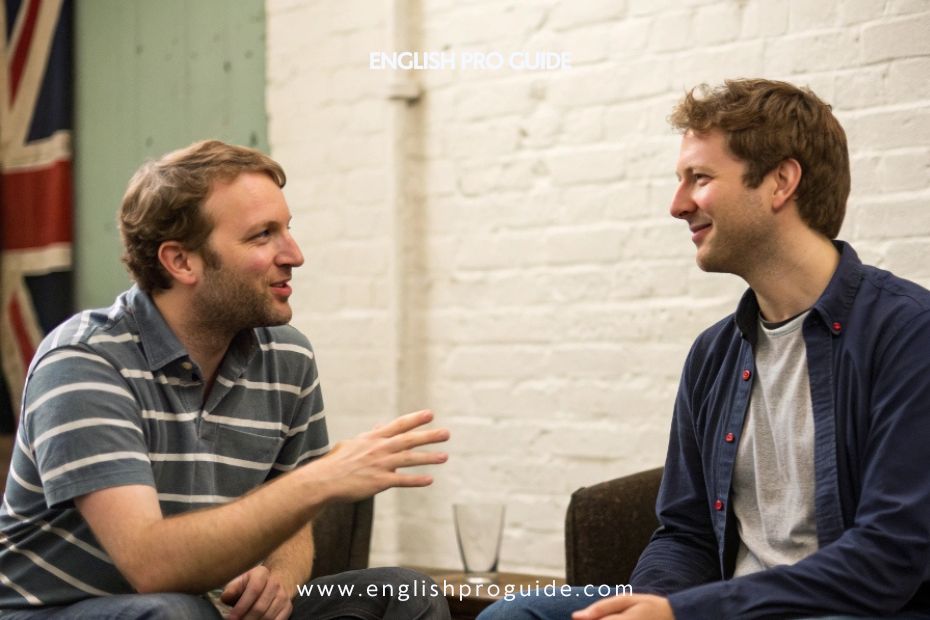10 Everyday Phrases to Perfect Your American or British Accent
Talking in a different accent can feel like a superpower—it’s fun, fascinating, and unlocks a whole new way to communicate.
Whether it’s the polished charm of a British accent or the casual flow of an American one, mastering these speech patterns doesn’t have to be intimidating. If you’ve always dreamed of adding these accents to your repertoire, you’re in the right place.
This guide will give you everything you need to know to sound more authentic, from understanding what makes accents unique, to practicing specific phrases, to finally putting everything into action. Are you ready to elevate your accent game?
The Basics of Accents
Before you can mimic an accent, you need to understand what makes it distinct. Any accent is more than just how words are pronounced—it’s a mix of rhythm, tone, and cultural nuances.
1.1 What Makes an Accent?
Have you ever wondered where accents come from? They’re the result of geography, history, and culture shaping the unique way groups of people pronounce words.
Think of it this way—it’s why an American might rhyme “bother” and “father,” but a Brit wouldn’t. Or why the same word, like “garage,” may sound worlds apart in the US and the UK.
Accents rely on a few main factors:
- Mouth and tongue placement – For example, British English often rounds vowels more, while American English keeps things relaxed.
- Stress – Words can be stressed differently depending on the accent.
- Connection between syllables – British accents enunciate more distinctly, while American accents tend to blend syllables together.
Understanding these quirks is the foundation of mastering an accent.
1.2 Differences Between American accent or British accent

British and American accents are like two sides of the same coin—built from the same language but full of unique flavors. Here’s a quick comparison table to help you spot the most notable differences:
| Feature | British Accent | American Accent |
|---|---|---|
| R Pronunciation | Often non-rhotic (“car” becomes “cah”). | Rhotic (“r” is pronounced in “car”). |
| Vowel Sounds | Rounded and elongated vowels (e.g., “bath”). | Nasal and flatter vowels (e.g., “bath”). |
| Intonation | Musical with dramatic rises and falls. | Flatter with consistent flow. |
| Contractions | Fewer used casually. | Frequent use in everyday speech. |
Why does all of this matter? Knowing these differences not only helps you sound authentic but also ensures you’re adaptable to either variant.
1.3 Why Phrases Are Essential for Accent Training
Want to step up your accent game fast? Focus on phrases instead of individual words. Phrases teach you not just pronunciation but also intonation and natural speech rhythms in English accents, making your delivery sound smoother and more realistic.
For example, practicing “How’s it going, mate?” in a British accent helps you learn both the tone and charm behind it. Similarly, the relaxed cadence of “How are you doing?” in an American accent captures the laid-back vibes across the pond.
Using phrases isn’t just more practical—it’s also a lot more fun.
Read More: Tongue Twisters for Better Pronunciation (Fun for Kids and Adults)
10 Everyday Phrases to Practice

Now that you know the basics, it’s time to learn the phrases that will transform your accent from hesitant to confident. Is british or american accent better? These everyday English phrases are not only great for practice but will also help you sound natural in conversations.
2.1 Phrases for British Accent Practice
British English is known for its crisp pronunciation, rounded vowels, and polite tone. Try these classic phrases to sharpen your skills and add some UK charm to your speech.
- “Fancy a cuppa?” – Perfect for inviting someone to tea. Master the rounded vowels in “cuppa.”
- “I’m absolutely knackered.” – A fun way to say you’re tired. Stress “absolutely” for authenticity.
- “Bob’s your uncle.” – A playful expression that means “all done!” Keep a light and cheerful tone.
- “Mind the gap.” – Famous on the London Underground. Enunciate clearly for the best effect.
- “Cheers!” – Great for showing gratitude or ending conversations. Use a polite, breezy tone.
Other expressions like “Lovely jubbly!” and “Take the mickey” will also add a dash of personality to your British accent practices.
2.2 Phrases for American Accent Practice
Which accent is better british or american? Nailing the American accent is all about keeping it casual and fluid. Focus on these popular phrases that showcase the relaxed nature of American English.
- “What’s up?” – An informal greeting. Keep the tone light and easygoing.
- “Can I get a coffee to go?” – Pay attention to the natural flow of “to go.”
- “Gimme a sec.” – Shorten “give me” to “gimme” to sound authentic.
- “You’re good.” – A casual reassurance typically said with a flat tone.
- “No worries!” – Use this to brush off thanks or apologies.
Take others like “I’m outta here” or “That’s awesome!” and practice their conversational rhythm for a more dynamic delivery.
2.3 How to Use These Phrases Effectively
Learning phrases is only the first step—putting them into practice makes all the difference. Here’s how to make the most of your new vocabulary:
- Shadow native speakers – Imitate their tone, rhythm, and pauses.
- Practice daily – Use these phrases whenever you can, even in front of a mirror.
- Record yourself – Spot what’s working and what isn’t by comparing your speech to native examples.
- Observe cultural context – Study when and how phrases are used to match the attitude behind the accent.
Read More: What Are the Best Techniques for Writing Easy Sentence?
Practical Tips for Fluency
By now, you’re equipped with great phrases, but what’s the key to mastering fluency? It’s all about regular practice and understanding the details that make accents unique.
3.1 Building Confidence Through Practice
Confidence comes from repetition and experience. Here are some simple yet powerful ways to get comfortable with your accent:
- Speak out loud daily, even if it’s just for 5 minutes.
- Try role-playing scenarios, like ordering tea in a British café or coffee in an American diner.
- Set small goals, like mastering three new phrases per week.
- Don’t be afraid to make mistakes—it’s part of the process!
3.2 Cultural Nuances in Accents
To sound authentic, you need to understand the cultural roots behind accents. For example:
- Brits often prioritize politeness and measured speech.
- Americans favor casual tones and contractions like “wanna” and “gonna.”
Movies, podcasts, and TV shows are great resources to observe these subtleties in action.
3.3 Moving Beyond Basic Phrases
Once you’ve mastered everyday phrases, challenge yourself with more complex sentences and idioms.
- Link phrases together to build natural flow.
- Use slang and idioms like “Call it a day” (American) or “Throw in the towel” (British) to step up your game.
- Mimic conversations from real life or media to get a hands-on feel for accents.
Final Thoughts
Mastering a British or American accent is an exciting challenge, and it’s totally doable with the right steps. From understanding how accents work to practicing daily with real-life phrases, every effort will bring you closer to fluency.
Pick a few phrases from this guide, practice them until they feel natural, and don’t forget to enjoy the process. After all, accents aren’t just about sounding polished—they’re a way to connect with culture and express yourself in new, unique ways.
What are you waiting for? “Get started, mate!” or “Go for it, dude!”—whichever accent you choose to learn, the time to start is now.






